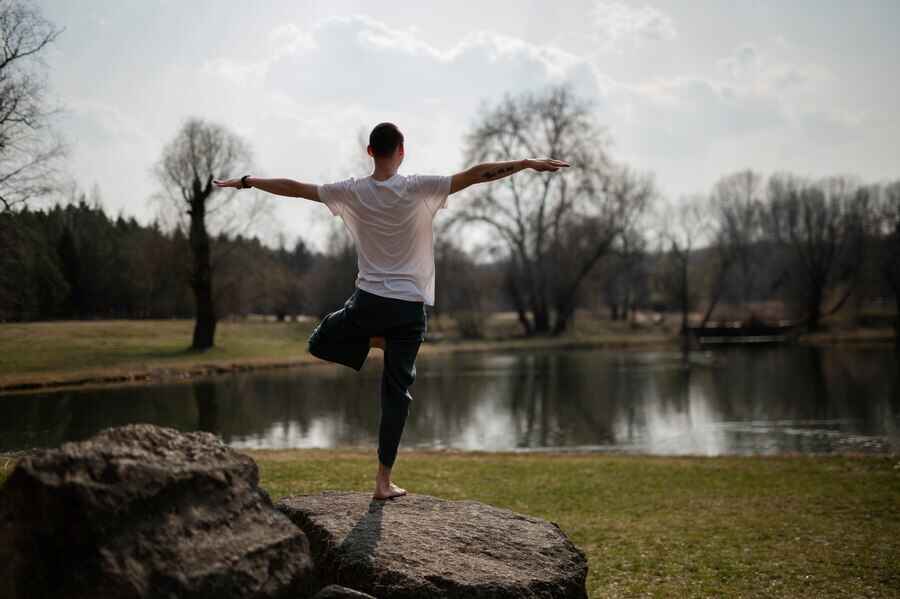in the hustle and bustle of our daily lives, the quest for fitness often becomes a pursuit solely focused on physical outcomes. However, there is a transformative approach that not only benefits the body but also nurtures the soul – mindful movement. In this exploration of “Mindful Movement: Fitness for Body and Soul,” we’ll delve into the concept of mindful fitness, its profound outcomes, and how it can enrich your overall well-being.
Understanding Mindful Movement
Mindful movement is more than just a workout; it’s a holistic approach to physical activity that emphasizes awareness, intention, and presence. Instead of mechanically going through exercises, mindful movement encourages individuals to be fully present in the moment, connecting their body and mind. This form of exercise draws inspiration from mindfulness practices, such as yoga and tai chi, integrating their principles into various fitness routines.

Benefits of Mindful Movement

- Enhanced Body Awareness: Mindful movement involves tuning into the sensations of your body during exercise. This heightened awareness allows for better form, reduces the risk of injury, and fosters a deeper connection with your physical self.
- Reduced Stress and Anxiety: Mindful movement incorporates conscious breathing and intentional movements, which have a calming effect on the nervous system. This can significantly reduce stress and anxiety levels, promoting a sense of tranquility.
- Improved Flexibility and Mobility: The deliberate and controlled nature of mindful exercises enhances flexibility and mobility. Through a full range of motion, joints and muscles become more supple and resilient over time.
- Mind-Body Connection: Unlike conventional workouts that may separate the mind and body, mindful movement integrates them. This connection can lead to a more harmonious relationship with your body, fostering a positive attitude towards exercise.
- Increased Energy and Vitality: Mindful movement rejuvenates both the body and soul, leaving you with a sense of invigoration. Regular practice can lead to increased energy levels and a more vibrant, balanced life.
Practicing Mindful Movement
1. Yoga: A Journey Within
Yoga, a quintessential form of mindful movement, combines physical postures (asanas), breathwork (pranayama), and meditation. Whether you’re a beginner or an experienced yogi, the practice of yoga encourages self-discovery and mindful awareness.
2. Tai Chi: The Dance of Harmony

Tai Chi, an ancient Chinese martial art, is a slow and graceful form of movement that promotes balance, flexibility, and relaxation. Practicing Tai Chi involves flowing movements, focusing the mind, and cultivating a sense of inner peace.
3. Mindful Running: Every Step with Purpose
Transform your regular jog into a mindful run by paying attention to your breath, the sensation of your feet hitting the ground, and the rhythm of your movement. Mindful running can turn a routine exercise into a moving meditation.
4. Bodyweight Workouts with Presence
Even traditional exercises like squats, lunges, and push-ups can become mindful when approached with intention. Focus on the quality of each movement, your breath, and the engagement of muscles. It’s not about quantity but about mindful execution.
Outcomes of Mindful Movement
1. Holistic Well-being
Mindful movement goes beyond the physical to address the mental and emotional aspects of well-being. By fostering a holistic approach to fitness, individuals experience a profound sense of balance and overall health.
2. Stress Reduction and Mental Clarity
The intentional focus on breath and movement in mindful exercises has a calming effect on the mind. As stress levels decrease, mental clarity and cognitive function often improve, leading to a more centered and focused mindset.

3. Increased Resilience to Challenges
Mindful movement teaches resilience by encouraging individuals to stay present and composed, even in the face of physical challenges. This resilience extends beyond the workout, positively impacting one’s approach to daily life challenges.
4. Enhanced Emotional Regulation
Connecting with the body through mindful practices promotes emotional awareness and regulation. This heightened emotional intelligence can positively impact relationships, both with oneself and others.
5. Long-term Lifestyle Sustainability
Unlike quick-fix fitness trends, mindful movement offers a sustainable approach to health and fitness. The emphasis on the mind-body connection cultivates a positive relationship with exercise, making it more likely for individuals to adopt a long-term, consistent fitness routine.
Conclusion
In a world that often promotes the external outcomes of fitness, mindful movement stands as a beacon of balance and well-being. By intertwining the physical and the mindful, this approach to fitness enriches the soul while sculpting the body. Whether through the flowing postures of yoga, the gentle movements of Tai Chi, or the intentional strides of mindful running, individuals can embark on a transformative journey towards holistic health. So, step onto the path of mindful movement, and witness the remarkable outcomes for your body and soul.
frequently asked questions
- What exactly is mindful movement, and how does it differ from traditional forms of exercise?
- Mindful movement is a holistic approach to fitness that emphasizes awareness, intention, and presence during physical activity. Unlike conventional workouts, mindful movement integrates mindfulness principles from practices like yoga and tai chi, creating a deeper mind-body connection.
- Can anyone practice mindful movement, or is it suitable only for those with experience in practices like yoga or tai chi?Mindful movement is inclusive and can be practiced by individuals of all fitness levels. It adapts well to different forms of exercise, from yoga and tai chi to running and bodyweight workouts. Beginners can start with simple mindful practices and gradually incorporate more complex movements.
- How does mindful movement contribute to stress reduction and improved mental well-being?Mindful movement incorporates conscious breathing and intentional movements, promoting relaxation and stress reduction. The focused attention on the present moment helps calm the nervous system, leading to improved mental clarity and a sense of tranquility.
- Are there specific mindful movement exercises that can be easily incorporated into a daily routine, especially for those with busy schedules?Yes, mindful movement can be seamlessly integrated into daily life. Simple practices like mindful walking, intentional breathing exercises, or short stretching routines can be incorporated into busy schedules to promote physical and mental well-being.
- Is mindful movement suitable for individuals seeking both physical fitness and spiritual well-being?Absolutely. Mindful movement acknowledges the interconnectedness of physical and spiritual well-being. The holistic approach fosters not only physical fitness but also emotional and spiritual balance, making it an ideal choice for those seeking a comprehensive wellness experience.
- How can one transition from traditional workouts to incorporating mindfulness into their fitness routine?Transitioning to mindful movement involves a gradual shift in focus. Start by incorporating mindfulness principles into familiar exercises, paying attention to breath and movement. Exploring practices like yoga or tai chi classes can provide structured guidance for those new to mindful movement.
- Can mindful movement be adapted for different fitness goals, such as weight loss or muscle building?Yes, mindful movement can be adapted to various fitness goals. The intentional and controlled nature of these exercises enhances body awareness and form, contributing to effective weight management, improved flexibility, and enhanced muscle strength over time.

